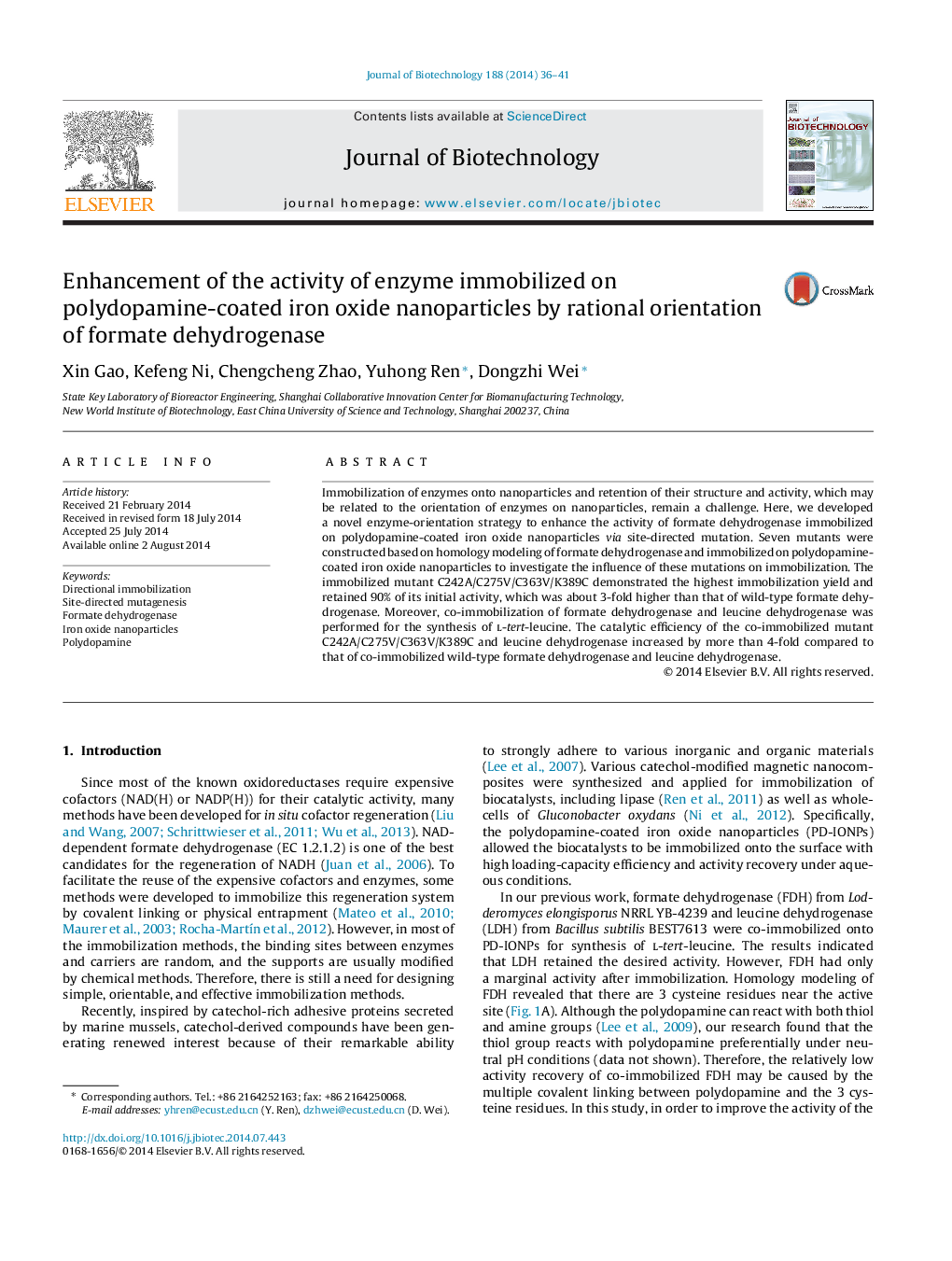| Article ID | Journal | Published Year | Pages | File Type |
|---|---|---|---|---|
| 6491411 | Journal of Biotechnology | 2014 | 6 Pages |
Abstract
Immobilization of enzymes onto nanoparticles and retention of their structure and activity, which may be related to the orientation of enzymes on nanoparticles, remain a challenge. Here, we developed a novel enzyme-orientation strategy to enhance the activity of formate dehydrogenase immobilized on polydopamine-coated iron oxide nanoparticles via site-directed mutation. Seven mutants were constructed based on homology modeling of formate dehydrogenase and immobilized on polydopamine-coated iron oxide nanoparticles to investigate the influence of these mutations on immobilization. The immobilized mutant C242A/C275V/C363V/K389C demonstrated the highest immobilization yield and retained 90% of its initial activity, which was about 3-fold higher than that of wild-type formate dehydrogenase. Moreover, co-immobilization of formate dehydrogenase and leucine dehydrogenase was performed for the synthesis of l-tert-leucine. The catalytic efficiency of the co-immobilized mutant C242A/C275V/C363V/K389C and leucine dehydrogenase increased by more than 4-fold compared to that of co-immobilized wild-type formate dehydrogenase and leucine dehydrogenase.
Related Topics
Physical Sciences and Engineering
Chemical Engineering
Bioengineering
Authors
Xin Gao, Kefeng Ni, Chengcheng Zhao, Yuhong Ren, Dongzhi Wei,
